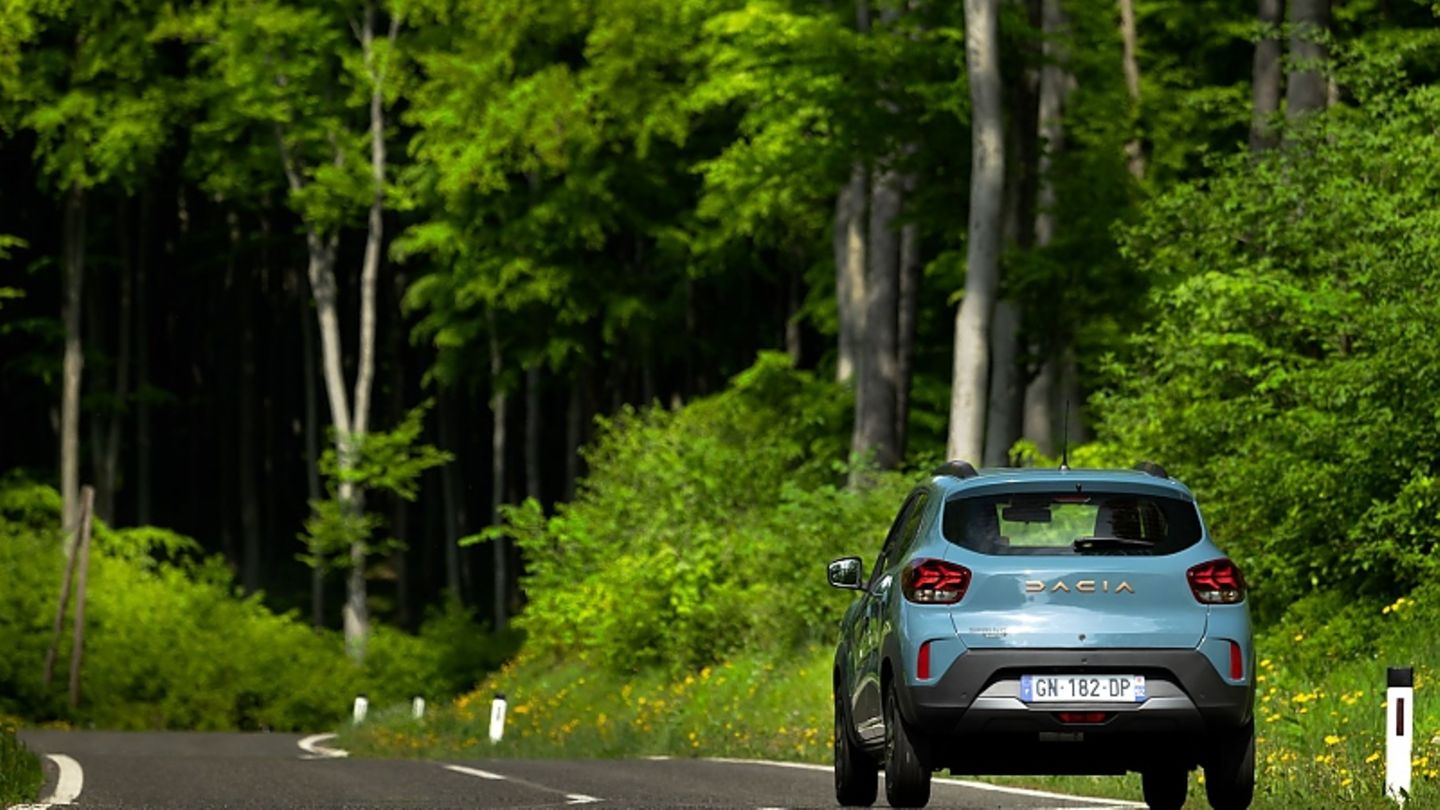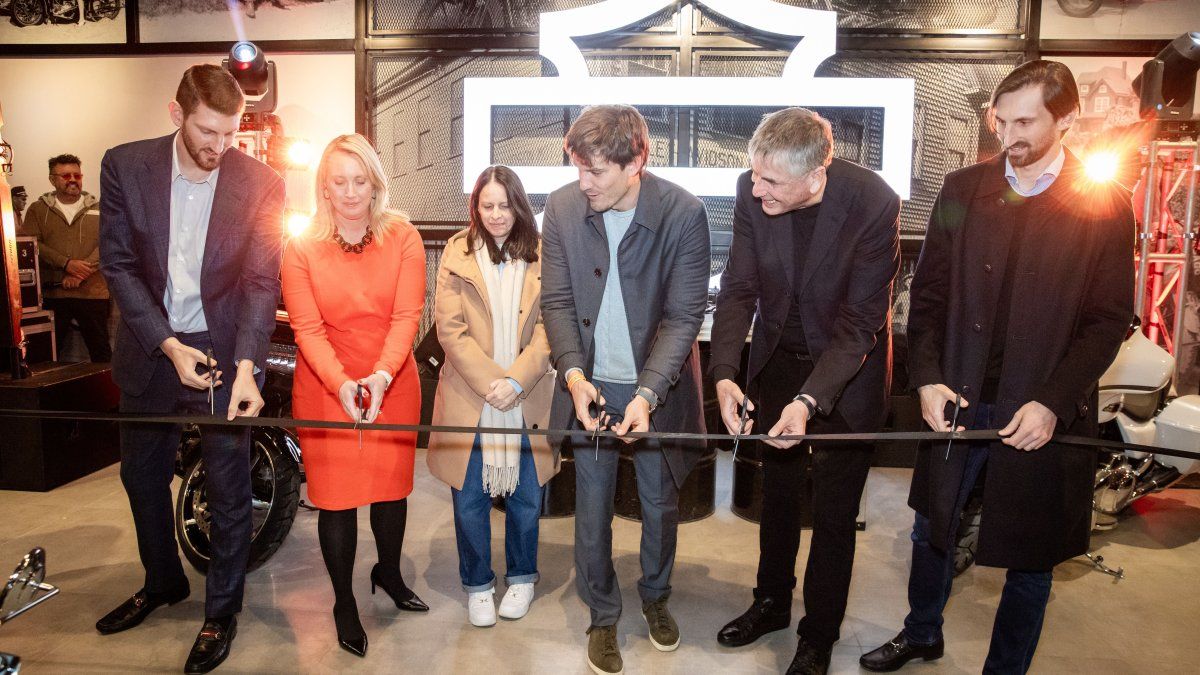After two years, Dacia has given its electric small SUV a more powerful engine with 48 kW / 65 PS along with some cosmetic changes. The vitamin injection has a positive effect on the longitudinal dynamics, other weaknesses have not yet been completely eliminated.
Dacia is an exciting brand in many ways. Basically, the Romanian Renault subsidiary is about good value for money, or to put it more simply: a lot of car for the money. Interestingly, many Dacia customers opt for high-quality equipment. Since the French Romanians also like to earn money, they add a new top line with the Extreme package. This includes a few new color accents or a practical conversion kit for the jogger, with which you can set up a camping bed over the second row of seats in just a few simple steps. There is also an optional tent that can be attached to the open trunk lid.
Out into the big wide world
With a 3.73 meter long battery-electric SUV like the Spring, such transformer details are of course not possible. After all, you get small details such as copper-colored mirror caps or special floor mats. The top model is a result of customer requests. After all, 72 percent of the approximately 110,000 Spring buyers so far come from other brands. One concern is at the top of the list: more steam, so that you can also be relaxed on the road outside of the city. So the engineers added 15 kW / 21 hp to the engine and tuned the electric motor to 48 kW / 65 hp. This is only available with the Extreme equipment, with which the Spring costs 24,550 euros, which is 1,800 euros more than the “Essential” line, which has to make do with the 33 kW / 44 hp engine.
In order to tease more power out of the electric motor, the technicians have increased the speed from 8,500 rpm to 14,700 rpm and at the same time increased the transmission ratio from 7.162 to 12.057. This means more power is sent to the drive wheels, even if the nominal engine torque drops by twelve Newton meters to 113 Nm compared to the Spring 45. The result is noticeable: the Spring 65 completes the sprint from zero to 100 km/h in 13.7 seconds, 5.4 seconds faster than the 45 version. On country roads, elasticity between 80 and 120 km/h is important. The difference of 13.5 seconds to a leisurely 26.2 seconds with the Spring 45 is almost astonishing. The top speed remains the same at 125 km/h. However, consumption increases from 13.9 kWh/100 km to 14.5 kWh/100 km. Since the capacity of the battery remains the same for both at 26.8 kilowatt hours, the range is reduced by ten kilometers to 220 km (WLTP).
During our test drive, which took us both through the city and on the freeway, we came up with an average consumption of 16.2 kWh/100 km. The increase in performance is particularly noticeable on faster routes or when merging into the flow of traffic. You don’t feel underpowered on country roads and most sections of the freeway. This is also due to the weight of only 1,050 kilograms. “We have continuously improved the Spring,” says Spring series boss Regis Macaluso. In addition to new colors, the technicians also worked on the shock absorbers. The chassis does its job neatly and quite comfortably, but it reaches its limits when there are transverse grooves in quick succession and the 14-inch tires desperately fight for grip on wet surfaces. The control systems also intervene very quickly in fast corners. In Vienna, the damp tram rails have proven to be treacherous. Because the rails have the same gauge as the Spring, traction is pretty poorly determined.
The often criticized steering should now be more direct. The five kilograms of additional weight on the front axle, which is due to the reduction gear that increases the wheel torque and the additional copper windings of the electric motor, also help. However, these details fizzle out, since the control is still far too indirect and inharmonious, which has an effect especially at higher speeds in the corners, because there is a lack of steering precision and thus safety. But it is fair to add that the Dacia Spring 65 is primarily a city car and is often used as a second car. The small e-crossover still fulfills this core competence. That’s why it doesn’t really matter that charging the battery with a maximum of 30 kW takes 56 minutes (0 to 80 percent), since most of Spring’s customers only cover 31 kilometers per day at an average speed of 26 km/h. Some use the socket to recharge their batteries. With 2.3 kW (single-phase, 10 amps), it takes 13:32 hours for the empty batteries to be fully charged again.
With such a car, it is clear that one should not expect a festival of appeal in the interior. The workmanship is quite solid and it is probably unavoidable that some screw heads are not covered. The navigation with TomTom graphics does its job and the seats are comfortable enough too. However, the price of the Dacia Spring 65 at 24,550 euros is only hot as long as there is federal funding.
Source: Stern
I’m a recent graduate of the University of Missouri with a degree in journalism. I started working as a news reporter for 24 Hours World about two years ago, and I’ve been writing articles ever since. My main focus is automotive news, but I’ve also written about politics, lifestyle, and entertainment.




